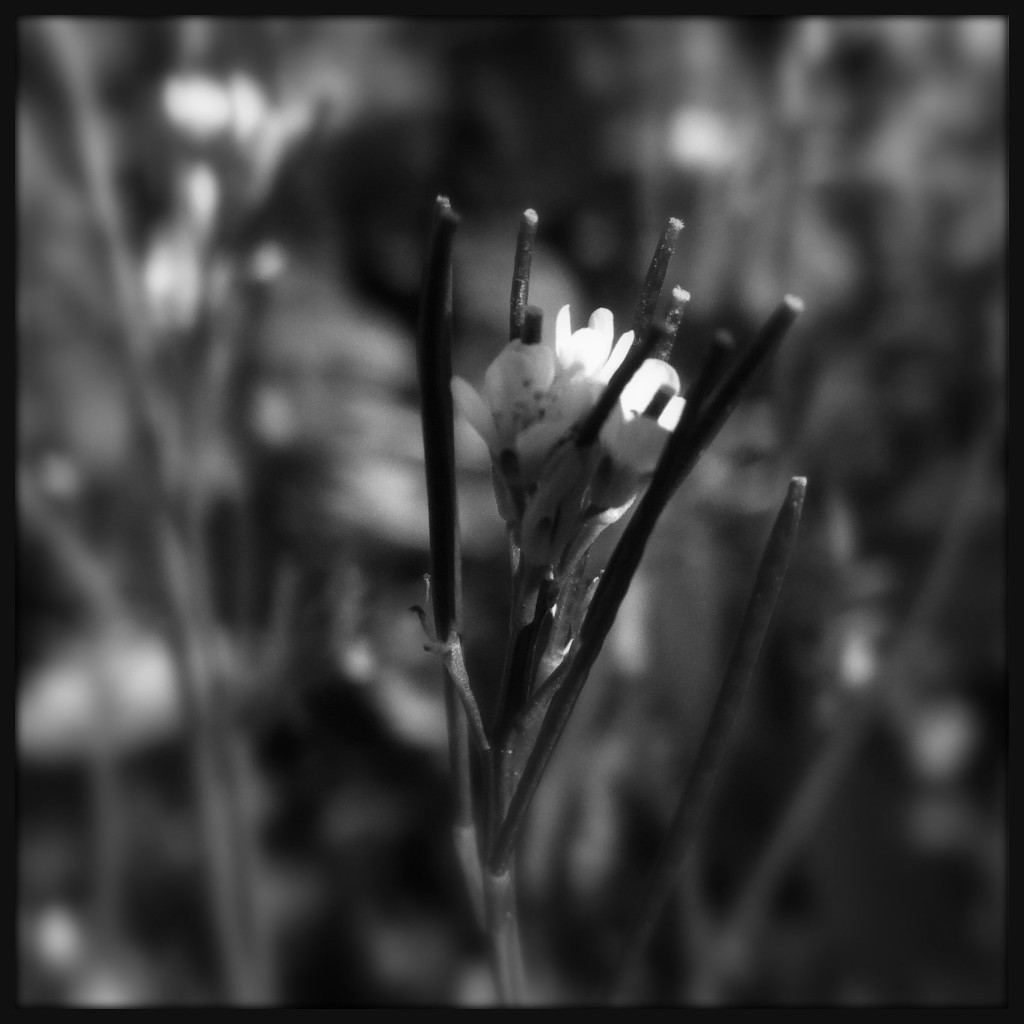At last, I found a few tiny violets blooming along the side of the ditch where Piney Woods Church Road meets Hutcheson Ferry Road. In this photograph, a violet beams at me in the afternoon sunlight against a background of pure blue sky.
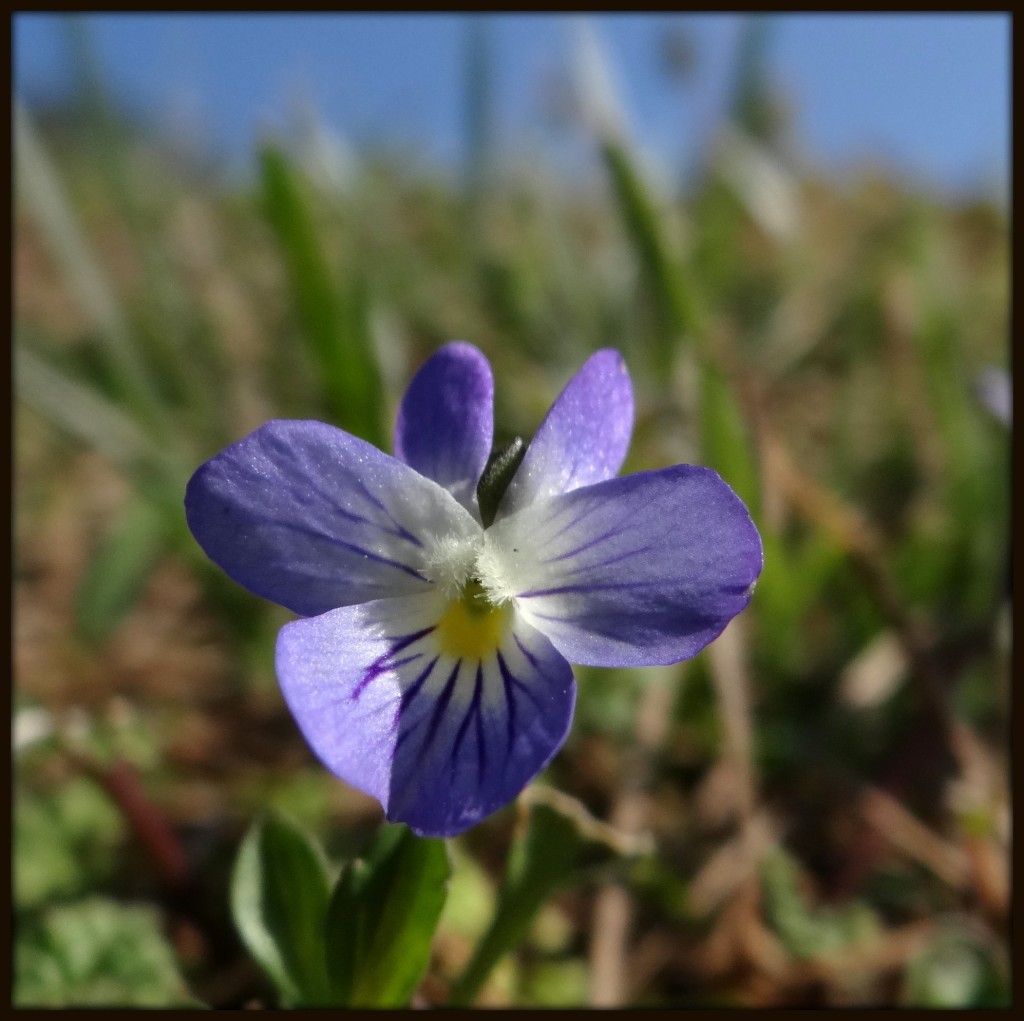
At last, I found a few tiny violets blooming along the side of the ditch where Piney Woods Church Road meets Hutcheson Ferry Road. In this photograph, a violet beams at me in the afternoon sunlight against a background of pure blue sky.

Yesterday afternoon, I went on a short hike at the Boundary Waters Park in Douglasville, Georgia, about twenty minutes northeast, by car, from my home. The red trail there leads up and down hills (quite steeply in places), through a mature deciduous forest. On my walk, I was delighted to discover several early spring wildflowers: violets in abundance along the floodplains of streams, and rue anemone, cutleaf toothwort, and hepatica blooming on the forested slopes. I also saw a wild turkey dash across the path in front of me, but he (or she) was far too quick for my camera. Pictured below are a violet and rue anemone (top row) and cutleaf toothwort and hepatica (bottom row). What lovely discoveries on a mild early spring day!

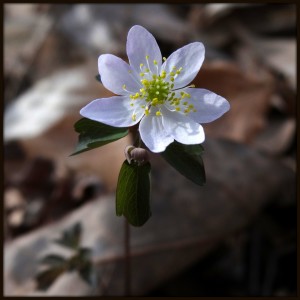


While hauling branches of a fallen cedar across my backyard, I discovered two splotches of bright purple standing out against the greens and browns of my still-mostly-dormant lawn. The first violets of the season are in bloom!
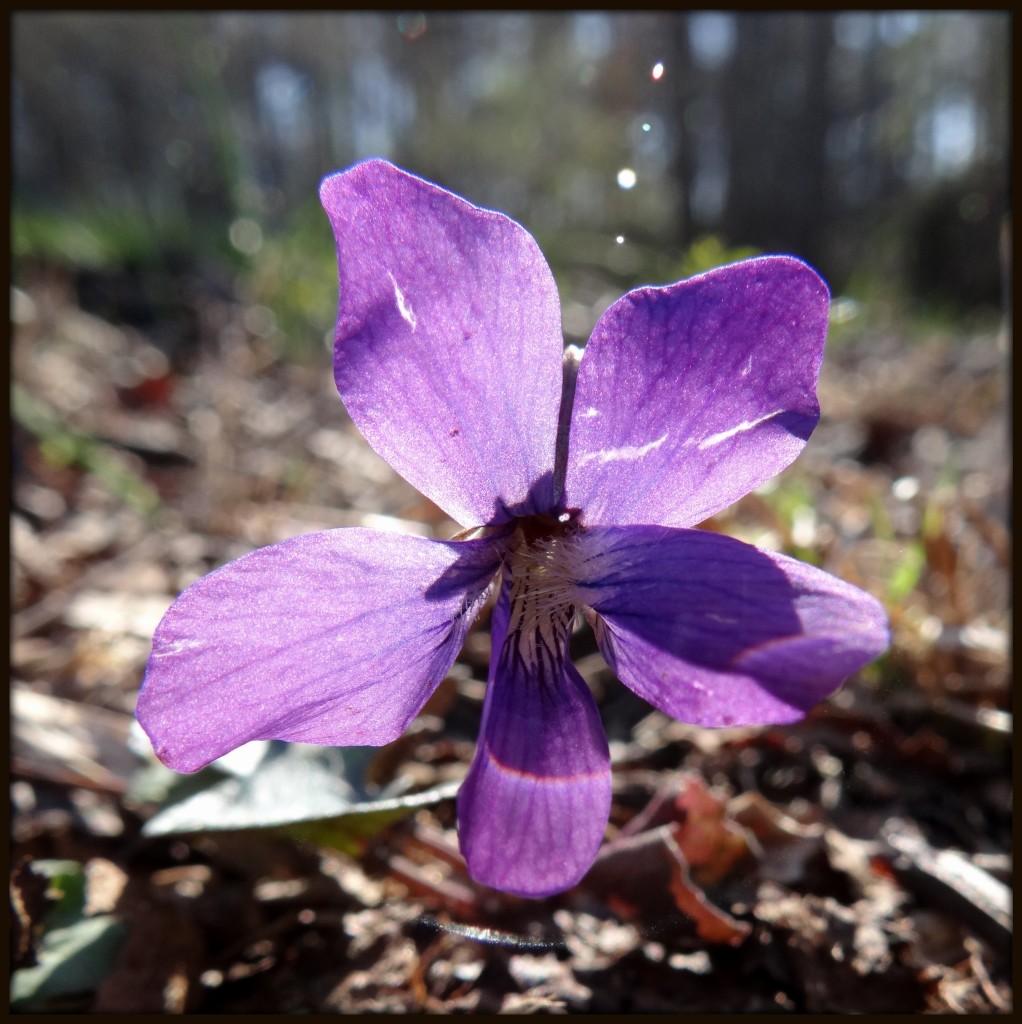
As we approach the middle of March, spring is getting well underway along the roadside where Piney Woods Church Road meets Hutcheson Ferry Road. Now henbits, bluets, hoary bittercresses, and other ruderal wildflowers begin to carpet the margin with dots of color — whites, blues, and purples. There is a sense of celebration in the air.

After a stunning display of orchids, tulips, daffodils, and crocuses at the Atlanta Botanical Gardens yesterday, I returned to Piney Woods this afternoon having difficulty making the shift back to a drab landscape still mostly wearing its winter garb. Apart from the everlasting daffodils (the blossom I first photographed weeks ago is still going strong), the only flowers blooming at the moment are minute ones. There are the maple blossoms yet, and then the flower garden of early weeds at the confluence of Piney Woods Church and Hutcheson Ferry Roads. There, I mostly found more hoary bittercress and the ubiquitous henbit. It took me a few minutes to discover something new: yet another tiny white flower, this one clustered atop at tiny stalk. It is a member of the genus Draba, and almost definitely Draba brachycarpa, shortpod whitlow grass. Its common name, alas, comes from a swelling near a toenail or fingernail (called a whitlow), for which the juices of this plant are supposedly beneficial in treating. Even its Latin name of Draba does not strike me as particularly poetic. However, it was a tiny flowering annual of this very genus that inspired the renowned early ecologist Aldo Leopold to write (in A Sand County Almanac), “He who hopes for spring with upturned eye never sees so small a thing as Draba. He who despairs of spring with downcast eye steps on it, unknowing. He who searches for spring with his knees in the mud finds it, in abundance…. Draba plucks no heartstrings. Its perfume, if there is any, is lost in the gusty winds. Its color is plain white. Its leaves wear a sensible wooly coat. Nothing eats it; it is too small. No poets sing of it. Some botanist once gave it a Latin name, and then forgot it. Altogether it is of no importance — just a small creature that does a small job quickly and well.”
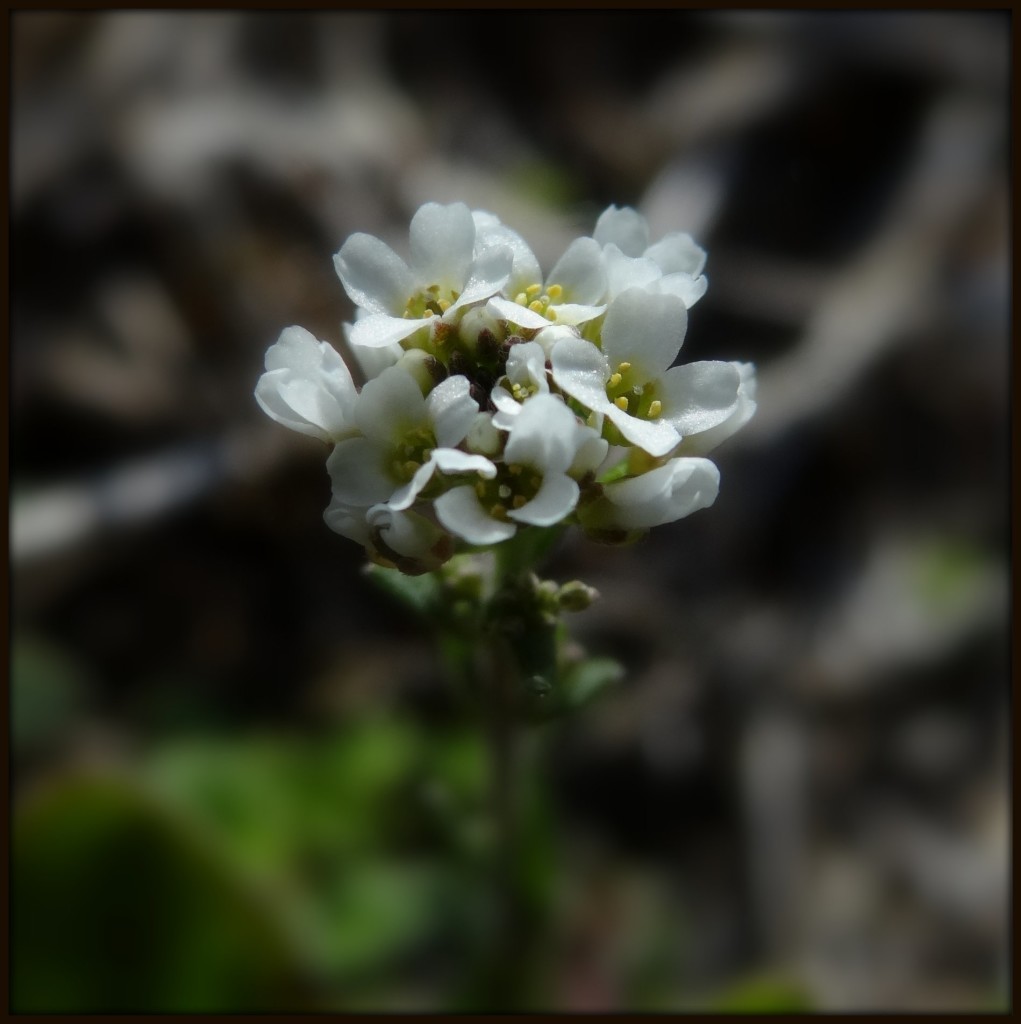
On a raw gray day, with the temperature hovering in the mid-40s, I compelled myself to seek out more signs of spring’s eventual arrival. I spent perhaps fifteen minutes endeavoring to photograph a tiny bluet (Houstonia pusilla), a native wildflower so minute (a few millimeters across, on a stem a couple of centimeters high) that it is a challenge to capture even with a macro lens. The result, though, is worth the effort: a photograph with a vibrant splash of violet color, in the midst of a dark and drab late-winter afternoon.
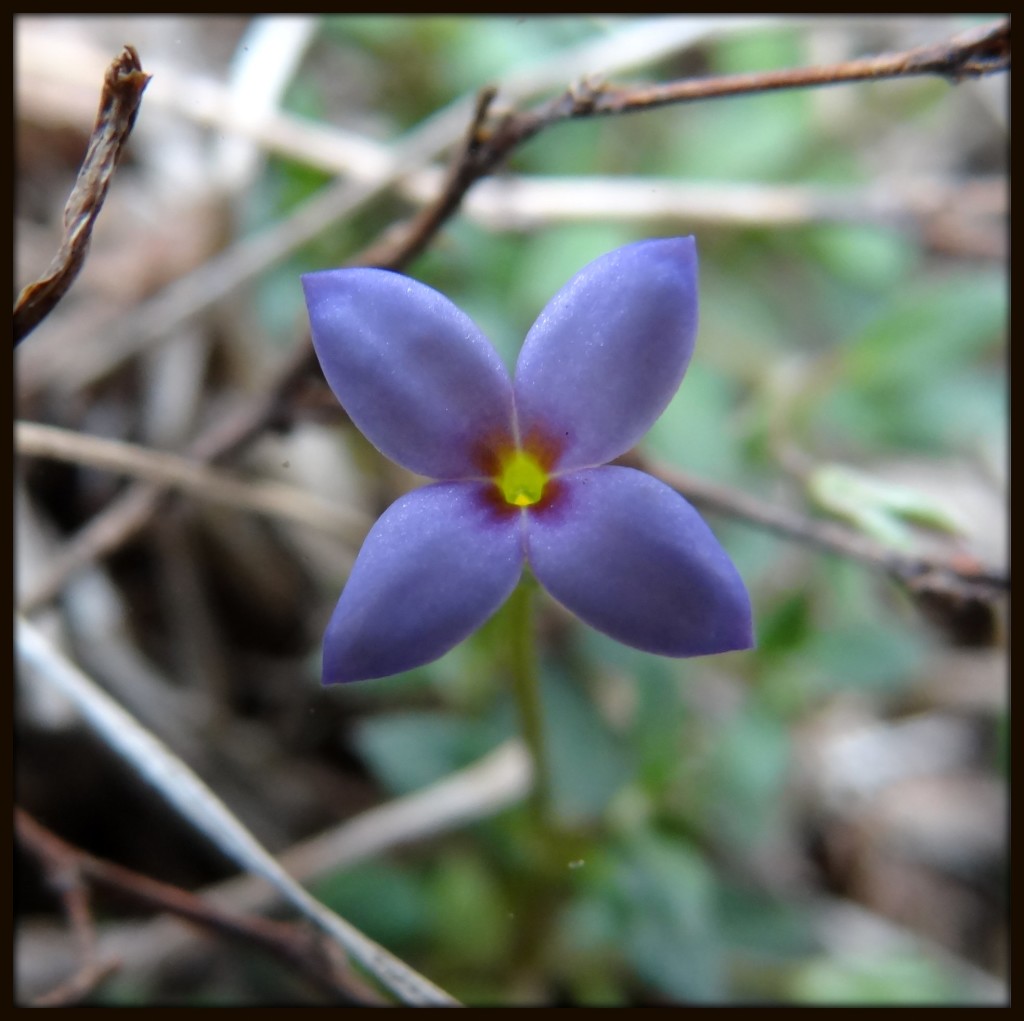
 It is mid-March, and ruderals, Spring’s harbingers, can be seen blooming along the roadsides. Ruderals are plants that inhabit “disturbed ground” such as garden beds, lawns, and roadsides. They live a hardscrabble life on the margin, surviving despite passing feet, lawnmowers, and even herbicides. The most common ruderal (nearly always in bloom) is the dandelion. But there are many others, far less conspicuous.
It is mid-March, and ruderals, Spring’s harbingers, can be seen blooming along the roadsides. Ruderals are plants that inhabit “disturbed ground” such as garden beds, lawns, and roadsides. They live a hardscrabble life on the margin, surviving despite passing feet, lawnmowers, and even herbicides. The most common ruderal (nearly always in bloom) is the dandelion. But there are many others, far less conspicuous.
Just beyond the road’s edge can be seen tiny four-petaled bluish-purple blooms with bright yellow centers. In places a few flower heads that barely rise above the grass while elsewhere, clusters turn the verge almost blue. They are bluets (Houstonia caerulea), natives that are common across most of the United States. They have a vibrant color and delicate form, but no scent or folk use, except for bluet root tea, supposedly used by the Cherokee to treat bedwetting.
Nearby are slender stalks of hoary bittercress (Cardamine hirsuta). A Eurasian winter annual, this hardy immigrant goes by many names, including lamb’s cress, land cress, shotweed, and snapweed. It keeps its leaves close to the ground, sending up wiry stems topped by minute white flowers. How the “bitter” got into its name is not clear, unless it refers to gardeners’ attitudes about it. Although considered a “noxious weed” for taking over lawns and gardens, it is a tasty salad green, slightly peppery in flavor.
A short distance away lies a roadbank that was doused with herbicides late last summer. Already it is covered with new growth: slender green vines with small oval leaves, topped by white flowers. Each flower appears at first glance to have ten petals, but actually has only five, each cleft deeply in two. This Eurasian ruderal may be the world‘s most abundant weed. Sometimes called common chickweed (Stellaria media), it has many other names like starweed, starwort, winterweed, stichwort, and chickwhirtles. It blooms nearly year-round, pollinated by bees and moths. Chickens and small mammals eat the young leaves, while sparrows and finches devour the seeds. Like hairy bittercress, it can be added to salads, and can also be used to treat obesity.
Spring is coming, and the woodland paths will soon be edged with native wildflowers such as round-lobed hepatica (Hepatica americana) and bloodroot (Sanguinaria canadensis). But for now, while the forest rests in the quiet of late winter, the change of seasons can be found instead along Georgia’s roadsides, during this Ruderal Spring.
This article was originally published on March 18, 2010.
As spring slowly approaches, I am finding myself drawn to the ditch at the Hutcheson Ferry end of Piney Woods Church Road. Every visit, I am rewarded by the sighting of another new wildflower to photograph. There is a catch, though: none of the flowers is showy (henbit being perhaps the most dramatic of the bunch, with its flashy, orchid-like blooms), and all of them are minute, with flower heads a few millimeters across. These flowers belong to a group known as the ruderals: wildflowers of waste places (such as roadside ditches). They are nearly all non-natives. Hoary bittercress, for example, hails from Europe, and is common throughout the eastern United States. Of course, unless one is prone to kneeling on the lawn in late winter armed with a magnifying lens, the flower might an unfamiliar one. In this photograph, the blooms are surrounded by long, narrow seed pods, called siliques, which will ripen and then pop open upon being touched, sending a new crop of seeds on their journey. Later in the season, this annual will develop a basal rosette of pinnately lobed leaves; despite “bittercress” in the name, the leaves are edible raw or cooked.
